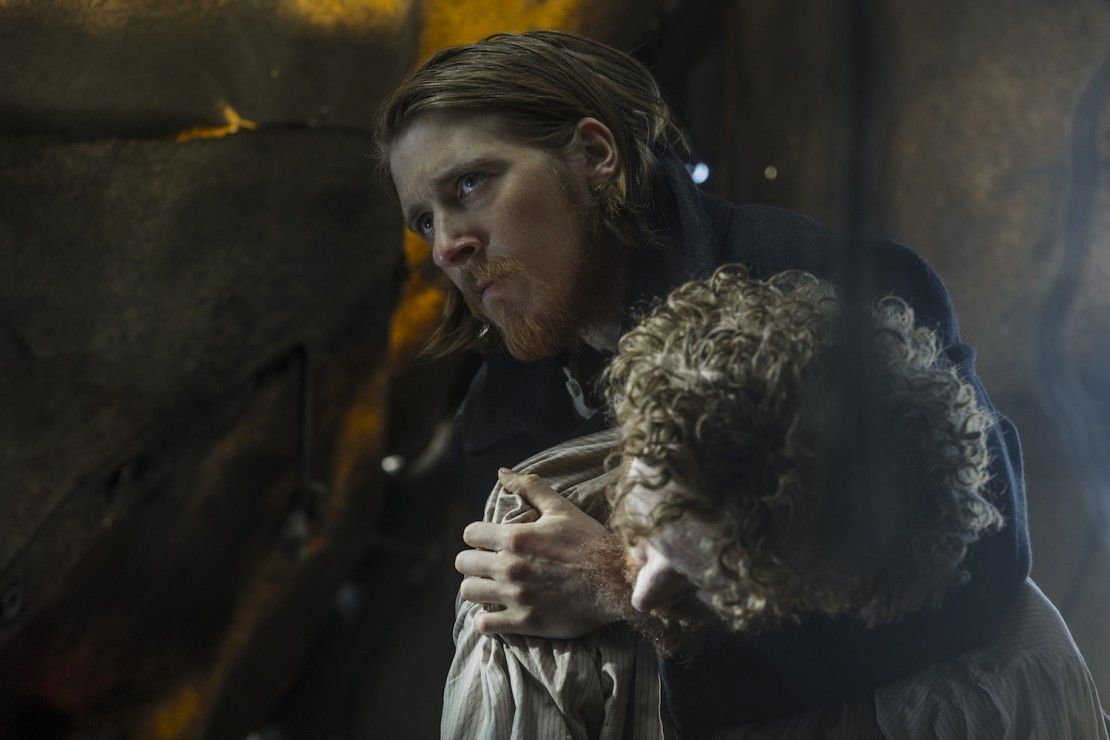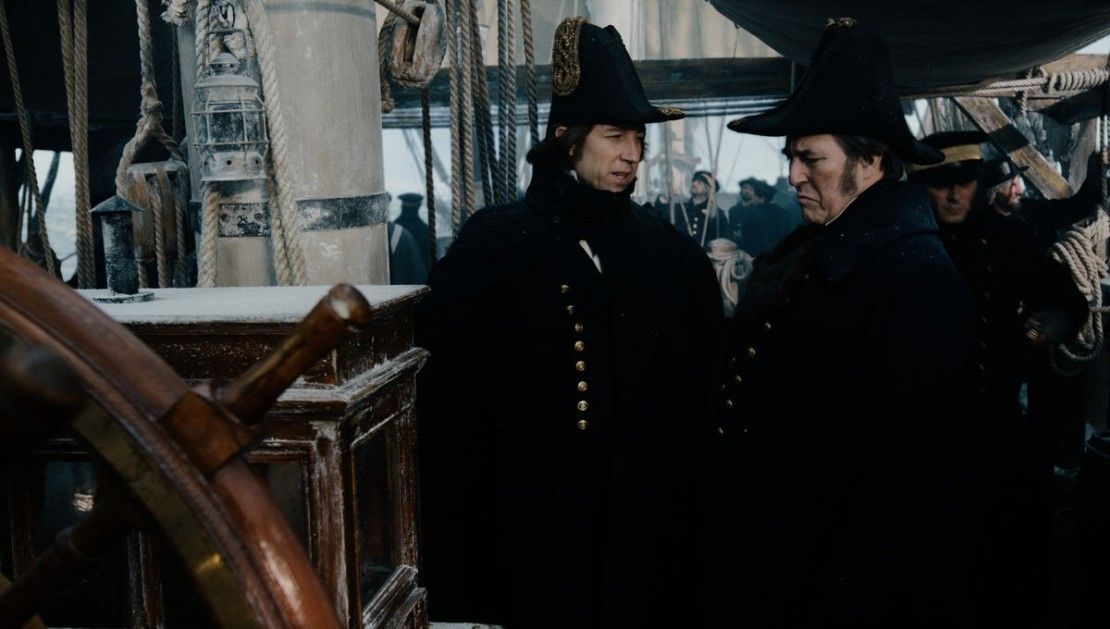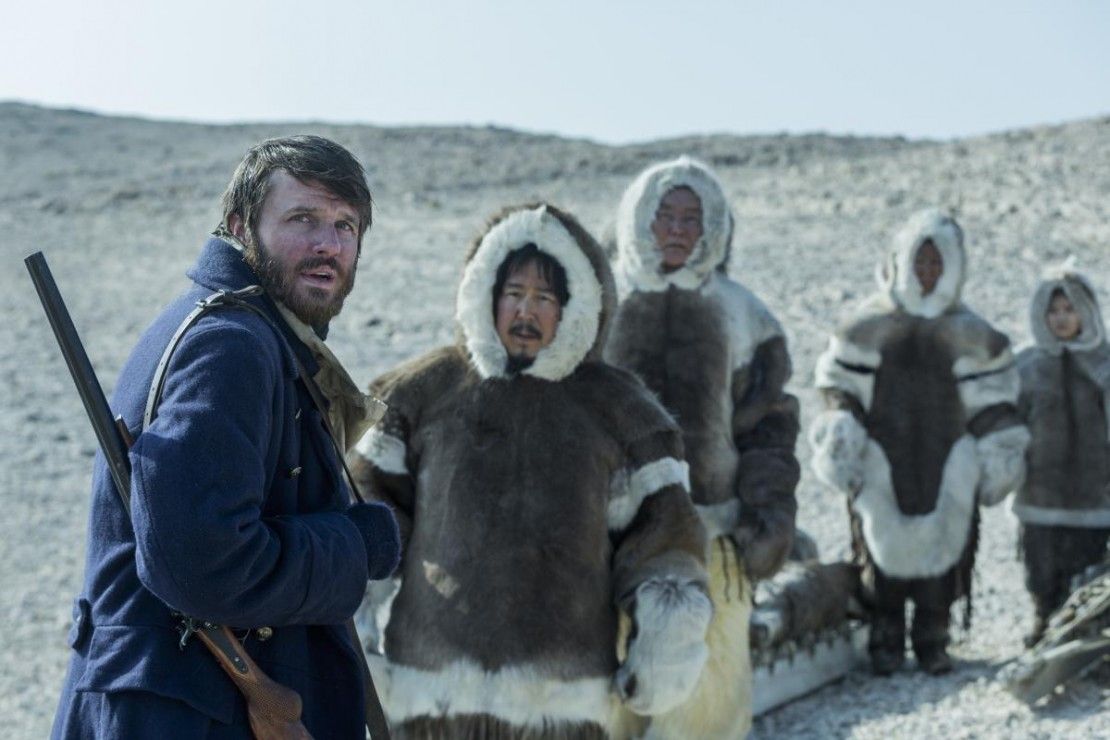
The Terror showrunner gave some invaluable advice about how to approach tone, tension, and characters in your horror movies or TV shows.
Dave Kajganich has made a huge impact on the horror genre with his recent work as showrunner for the first season of AMC's The Terror, as well as being the screenwriter for Luca Guadagnino's 2018 remake of Suspiria.
I have a lot of favorite shows here, as we all know, but I honestly think Season One of The Terror is a masterpiece. It is one of the best things to air in recent TV history, so I'll leap on any opportunity to talk about it. During his Oct. 24 Austin Film Festival panel with executive producer Barbara Morgan, Kajganich shared some behind-the-scenes secrets and valuable screenwriting insight.

Development on The Terror
For anyone unfamiliar, The Terror is based on a Dan Simmons novel of the same name and it follows a fictionalized version of the real-life Franklin Expedition -- a British expeditionary force seeking the Northwest Passage in the 1840s. Spoiler alert: Everyone dies.
Once you get past the grim premise, the show is a masterclass in pacing, character development, and how to create tension and horror in unique, character-driven ways. Audiences seemed to have slept on the show, because AMC did not promote it as they should have. At AFF, Kajganich talked about how long the process for developing the show was. Originally penned as a feature with David Fincher attached to direct at one point, the project moved around a lot before it landed as a ten-part limited series at AMC. Kajganich had a co-showrunner and executive producer, Soo Hugh.

Interestingly, Kajganich said he specifically asked talent agencies to send him potential writers who were not working in the horror genre. While the show at its core is a period horror story, they tackled it first as a drama.
What Is His Approach to Writing
Kajganich said the writers had just ten weeks to build the season, and they used a unique approach to break the story. "I'll never do it a different way," he said.
The writers' room used a color-coded system to first plot out the central characters' psychological and emotional arcs. So Captain Crozier (played by Jared Harris) was blue, for example. The writers figured out his entire arc and all the necessary beats his story needed to feel complete. Then, it was a matter of "folding character stories into one another" to form individual episodes. In this system of writing, character beats mattered more than plot beats.
The writers also considered how each of the show's characters transitioned from a high-adventure story to a horror story. Each character (except for a couple of exceptions) had a moment where they experienced existential horror and realized they were not in the narrative they were expecting. This is a system Kajganich has discussed elsewhere and continues to use today.

How to Handle Tone
For Kajganich, writing The Terror was about creating a "palette of dread" over a "palette of fear." The show has a supernatural monster, yes -- but the audience doesn't get a really good look at it until episode five. This restraint, according to Kajganich, "proved that we didn't need the monster" for the show to function. This was important especially at a network like AMC, which has "a zombie behind every tree," he said.
Kajganich pointed out that for their show, horror was about developing anxiety and the promise of scary content. There are jump scares and there is gore, but the horror is more internal than external.
The Terror is about the horrors of humanity. What will humans do to survive? What horrors will they face within themselves, and will they emerge better or worse on the other side? And, at its core, The Terror is about men who are taken to extremes and still find the capacity to love.

"Directing the Director"
Kajganich said he is very aware of blocking and setting during his writing process, and with The Terror specifically, he never wanted the audience to rest within a comfortable middle distance. The show is shot either extremely tight, in claustrophobic close-ups that put the viewer near the characters and inside the stuffy ship interiors, or in wide shots that demonstrate the loneliness of their Arctic landscape.
Kajganich said that this awareness of blocking, tonal choices, and a palette of details are really what allow him to control the overall tone of a work. He said he feels that writers "give power away by not directing the director." The writer clarified that he would never dictate a camera angle in a script. But if a character is moving within a space, is there something about their path or movement that contributes to subtext or their emotional arc? If so, Kajganich will be explicit about that in the script, so a director is not scrambling to find that while shooting.
That is work you "could have done already" in the writing process, he said.

The Importance of References
Kajganich also made a unique point about seeking the right references while working on his projects. So as mentioned, for The Terror, he didn't want horror writers. When he had his writing staff in place, he asked them to watch war films and westerns, because he didn't want them to focus on externalizing the horror of the characters' situations.
Two movies he had The Terror staff watch were The Shooting and Come and See.
On Suspiria, his references were Rainer Werner Fassbinder films. Kajganich also said that he once attempted to write a remake of Escape from New York with an extremely serious tone, removing the campy elements. In that case, he was drawing from the incorrect references, he said. Making that kind of film too serious negated what was fun about it.

"Be aware of false momentum," he said.
By this he meant that you should be wary of how you get into a project, because how you get a job will dictate how the process will go. If it's really difficult and unpleasant, chances are the rest of the job will be more of the same. He also suggested that writers should trust their audience's intelligence. Both The Terror and Suspiria are long, slightly slow-moving stories. Kajganich said he would much rather appeal to the audience that will go along for the ride and trust the storytelling than cater to the viewers who complain.
He also warned against spoon-feeding viewers exposition. He suggested stepping into your characters' shoes and considering what they know and don't know while writing scenes, instead of trying to figure out what the audience should know at any given point.
Ambiguity, he said, "is the fun part." Actors have also told him that they prefer to work in that space, which falls "between text and subtext."

What's next?
Kajganich will next adapt Bones & All and is planning another project with Guadagnino.
In the meantime, check out some more of our horror coverage! Read about what makes another Arctic story, The Thing, so scary. Here are eight reasons to make horror movies. We can also tell you everything you need to know about being a horror auteur.
Do you have any favorite horror films or shows that had an especially unique approach to the writing process? Share your favorites in the comments!
Your Comment
2 Comments
The Terror was incredible! I always recommend it.
October 28, 2019 at 7:29PM
Not enough people have seen it!
October 29, 2019 at 8:21AM